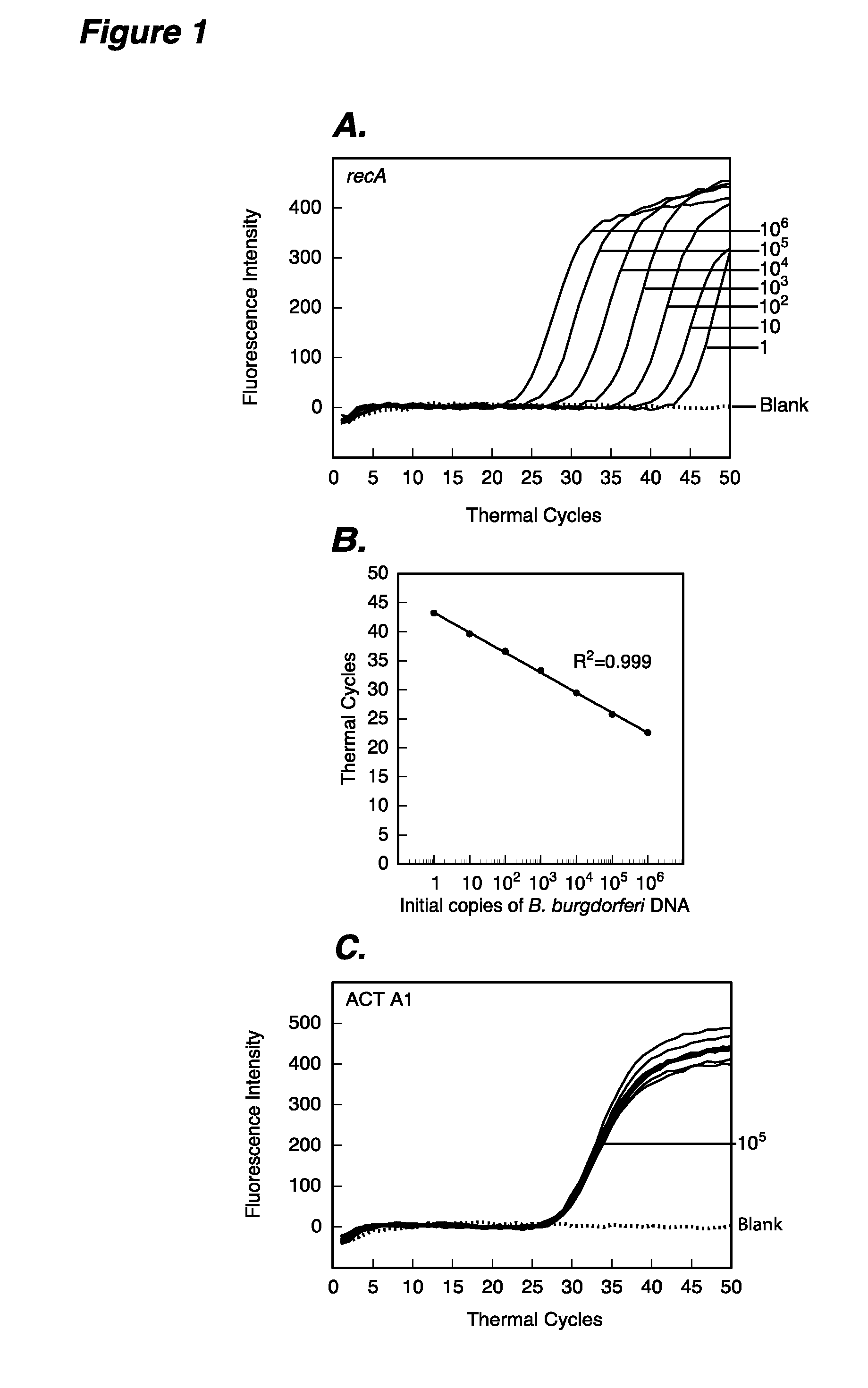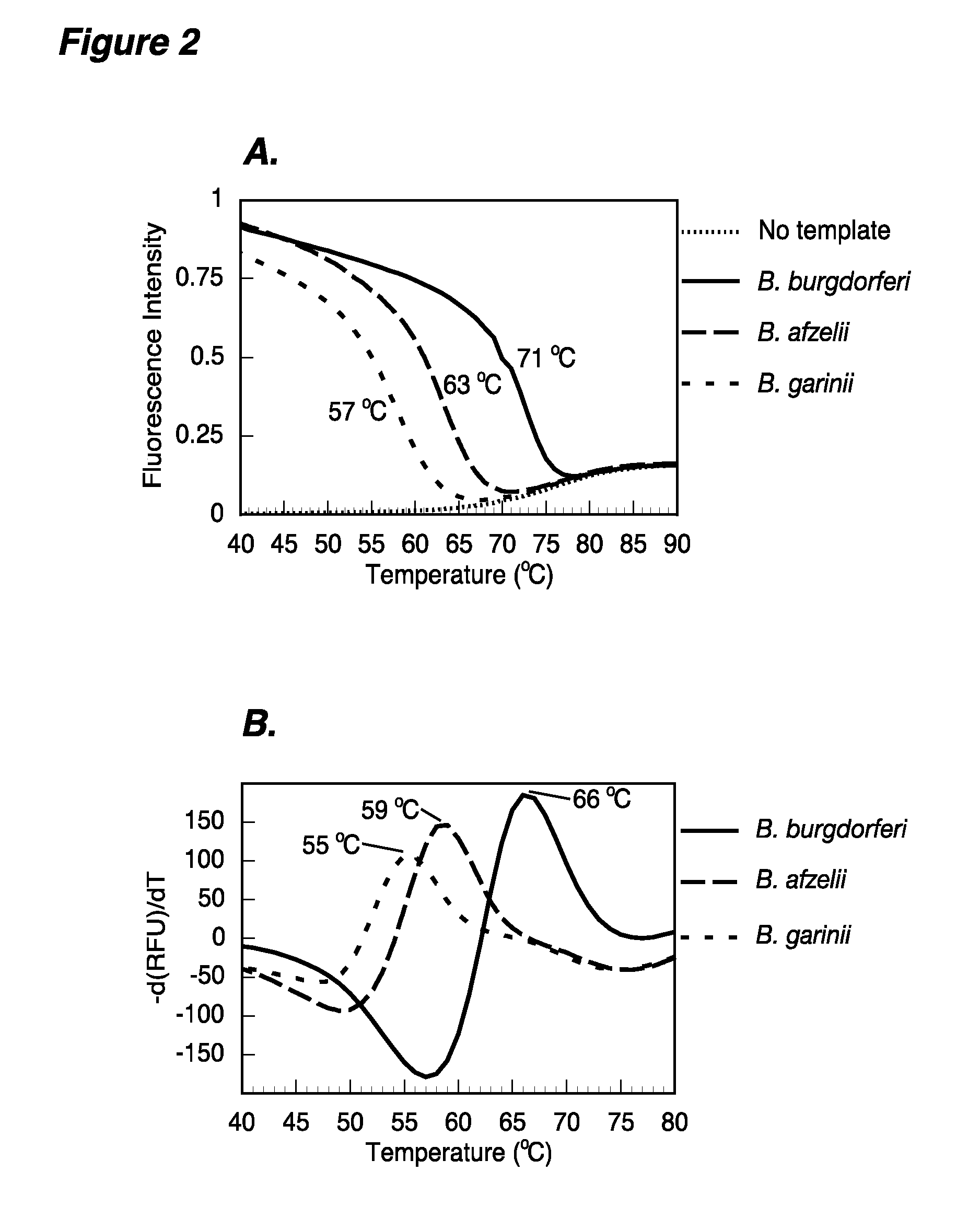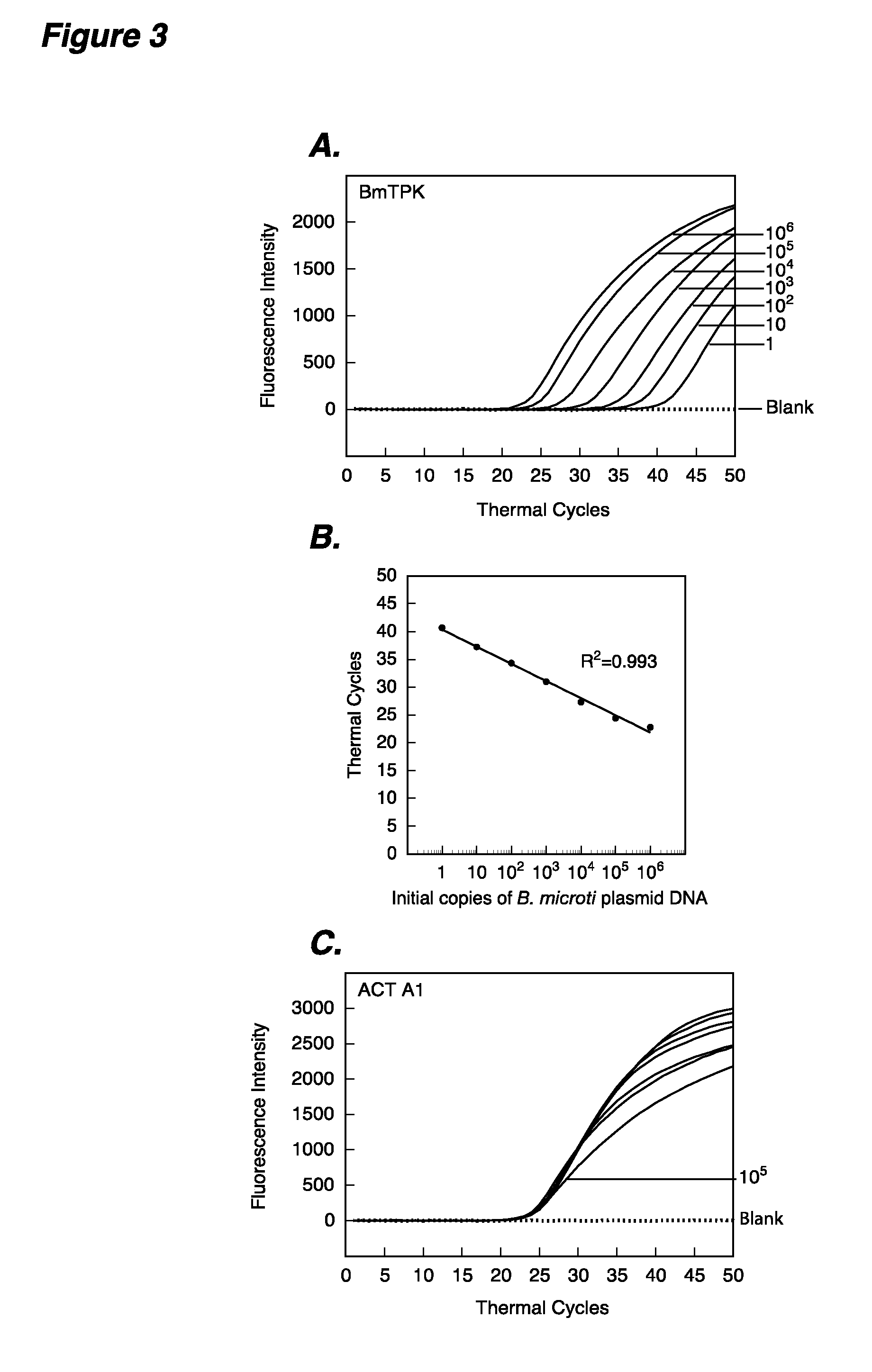Multiplex diagnostic assays for lyme disease and other tick-borne diseases
a multi-assay, tick-borne disease technology, applied in the direction of microbiological testing/measurement, biochemistry apparatus and processes, etc., can solve the problems of insufficient multiplexing of current assays that detect specific nucleic acid sequences to provide an accurate picture, and the inability to distinguish between active infections and infections that have been cured by treatmen
- Summary
- Abstract
- Description
- Claims
- Application Information
AI Technical Summary
Benefits of technology
Problems solved by technology
Method used
Image
Examples
example 1
[0100]This example demonstrates that in an assay according to this invention, molecular beacons can detect B. burgdorferi between 1 and 106 starting copies and can quantify the starting copy number in a multiplex assay, when a human DNA sequence is also amplified and detected in real time. Real-time amplification plots of recA and ACT A1 gene target sequences in PCR assays to estimate quantities of B. burgdorferi (FIG. 1A) and human (FIG. 1C) DNA are shown. Human DNA (containing 105 ACT A1 copies) spiked with ten-fold dilutions of B. burgdorferi strain N40 ranging from 1 to 106 were used in the PCR assays containing both RecA3 and ACTA1 molecular beacons. Sensitivity and specificity of the detection system is indicated by the ability of RecA3 and ACTA1 molecular beacons to quantify the amplicons from both the recA and the ACT A1 genes in the same PCR assay tubes. A high coefficient of correlation (r2=0.999) between the PCR threshold (Ct) values and the spirochete number obtained fro...
example 2
[0103]This example demonstrates that denaturation profiles of the hybrids of RecA3 molecular beacon probe with the target oligos from three Borrelia species can distinguish B. burgdorferi, B. afzelii and B. garinii (FIG. 2A). Additionally, one real-time PCR assay distinguishes three major Lyme spirochetes using post-amplification denaturation curves. Either a melting curve made by slowly increasing the reaction temperature or an annealing curve made by slowly decreasing the reaction temperature is used. Using different sets of primers and the same RecA3 molecular beacon probe, asymmetric real-time PCR amplified the fragment of recA gene from all three Borrelia species, and a post-PCR denaturation profile could distinguish all three spirochete species (B. burgdorferi, B. afzelii, and B. garinii) from one another based on the Tm of the probe-target hybrid (FIG. 2B). In the normal real-time PCR, either (i) competition between the probe and complementary strand, or (ii) secondary or ter...
example 3
[0107]This example demonstrates that in assays of this invention, molecular beacons can detect DNA from 1 and 106 Babesia microti in a multiplex assay in the presence of human DNA and can quantify the starting copy number in a multiplex assay, when a human DNA sequence is also amplified and detected in real time. Amplification plots of BmTPK and ACT A1 genes in PCR assays using the human DNA representing 105 ACT A1 copies spiked with ten-fold dilutions from 1 to 106 of B. microti DNA copies were used to estimate quantities of B. microti (FIG. 3A) and human (FIG. 3C) DNA by employing both BmTPK and ACTA1 molecular beacons. The assay quantified amplicons from both the BmTPK and the ACT A1 genes in the same PCR assay tubes. A high coefficient of correlation (r2=0.993) between the Ct values and the parasite numbers obtained from the standard curve (FIG. 3B) indicates that the molecular beacons can be used effectively to quantify the parasite burden in the human infected cells using mult...
PUM
| Property | Measurement | Unit |
|---|---|---|
| Melting point | aaaaa | aaaaa |
Abstract
Description
Claims
Application Information
 Login to View More
Login to View More - R&D
- Intellectual Property
- Life Sciences
- Materials
- Tech Scout
- Unparalleled Data Quality
- Higher Quality Content
- 60% Fewer Hallucinations
Browse by: Latest US Patents, China's latest patents, Technical Efficacy Thesaurus, Application Domain, Technology Topic, Popular Technical Reports.
© 2025 PatSnap. All rights reserved.Legal|Privacy policy|Modern Slavery Act Transparency Statement|Sitemap|About US| Contact US: help@patsnap.com



